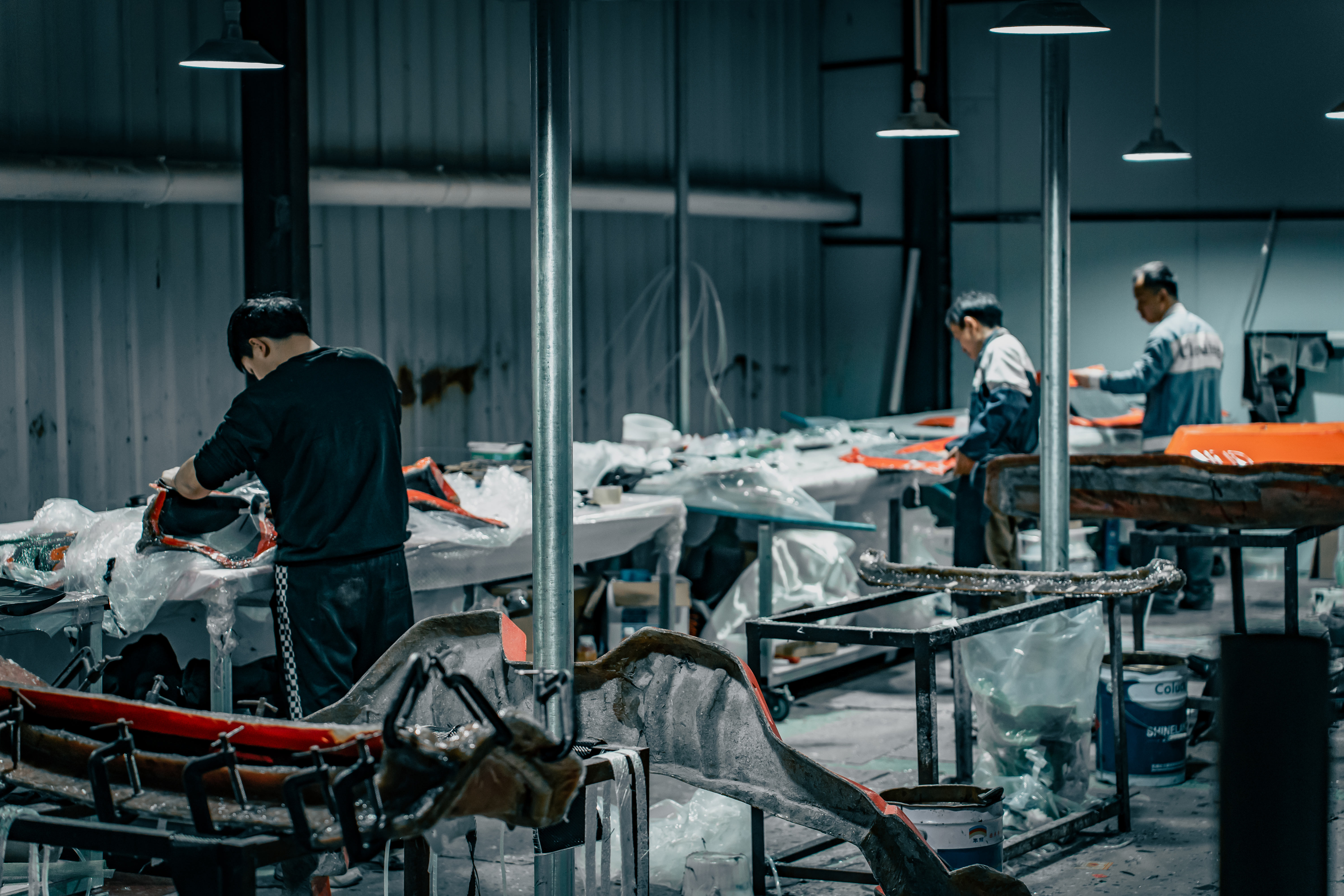How to Make a Carbon Fiber Hood
2024
Carbon fiber is renowned for its strength, light weight, and durability, making it a preferred material for high-performance automotive parts like hoods. This guide will walk you through the detailed steps to craft your own carbon fiber hood, ensuring you grasp both the technique and the art behind this DIY project.
II. Essential Materials and Tools
To start, you'll need carbon fiber fabric, epoxy resin, a hardener, a mold release wax, and a gel coat. Tools should include brushes, rollers, scissors, and a vacuum bagging setup. Ensure all materials are compatible for best results.
Choose a clean, dust-free area with good ventilation to work in, as resins can emit strong fumes. Lay down protective coverings and gather all necessary equipment before beginning to ensure a smooth workflow.
IV. Creating the Mold
Designing the Hood Shape Begin by sketching the desired shape of your hood, taking into account the specifics of your vehicle's make and model.
- Constructing the Mold Use foam or wood to create a rough base, then cover it with a fiberglass shell to form the mold.
- Finishing the Mold Surface Sand the fiberglass to a smooth finish and apply a gel coat for a glossy, non-stick surface.
V. Laying the Carbon Fiber
Cutting the Carbon Fiber Measure and cut the carbon fiber fabric to cover your mold with an allowance for overlap.
- Arranging the Fiber Layers Lay the fabric in the mold, using several layers to build up thickness.
- Applying the Resin Mix the epoxy resin with the hardener according to manufacturer instructions and apply it evenly over the carbon fiber, ensuring no air bubbles.
VI. Curing the Carbon Fiber
The resin needs to cure, which can be hastened by using a heat lamp or leaving the assembly in a warm, dry place. Vacuum bagging can help ensure an even cure and reduce air pockets.
VII. Releasing the Hood from the Mold
Once cured, carefully remove the carbon fiber hood from the mold. This step might require wedges and a gentle touch to avoid damaging both the new hood and the mold.
VIII. Trimming and Finishing
Trim any excess material from the edges using a fine-tooth saw or a Dremel tool. Sand the edges smooth and apply a polish to achieve the desired gloss.
IX. Installing the Hood
Fit the hood onto your vehicle to check alignment and make adjustments if necessary. Secure it with hinges and latches, ensuring everything is tightly fastened and aligned properly.
X. Maintenance and Care
Maintain your carbon fiber hood by regularly cleaning it with mild soap and avoiding harsh chemicals. Inspect for scratches or chips, which can be repaired with resin or a carbon fiber patch kit.
XI. Advantages of DIY vs. Pre-made
Building your own hood can be significantly cheaper than buying a pre-made one and allows for customization to perfectly fit your vehicle and aesthetic preferences.you can contact icooh.
XII. Safety Precautions
Always wear gloves and a respirator when handling resins and working with carbon fiber material. Keep a first aid kit and eye wash station accessible in your workspace.
XIII. Troubleshooting Common Issues
If you encounter issues like resin not curing properly or air bubbles, consult troubleshooting guides or seek advice from experienced fabricators.
XIV. Conclusion
Creating your own carbon fiber hood is a rewarding project that can enhance both the performance and appearance of your vehicle. With patience and attention to detail, you can achieve professional-level results in your home garage.
XV. FAQs
- How much carbon fiber fabric do I need for a hood?
- Can I color the carbon fiber?
- What is the best way to ensure no air pockets in the final product?
- How long does the resin take to cure fully?
- Are there environmentally friendly alternatives to epoxy resin?

 EN
EN
 AR
AR
 BG
BG
 HR
HR
 CS
CS
 DA
DA
 NL
NL
 FI
FI
 FR
FR
 DE
DE
 EL
EL
 HI
HI
 IT
IT
 JA
JA
 KO
KO
 NO
NO
 PL
PL
 PT
PT
 RO
RO
 RU
RU
 ES
ES
 SV
SV
 TL
TL
 ID
ID
 SR
SR
 SK
SK
 UK
UK
 VI
VI
 TH
TH
 TR
TR
 FA
FA
 AF
AF
 MS
MS
 GA
GA
 CY
CY
 IS
IS
 HY
HY
 AZ
AZ
 KA
KA
 MY
MY

 ONLINE
ONLINE